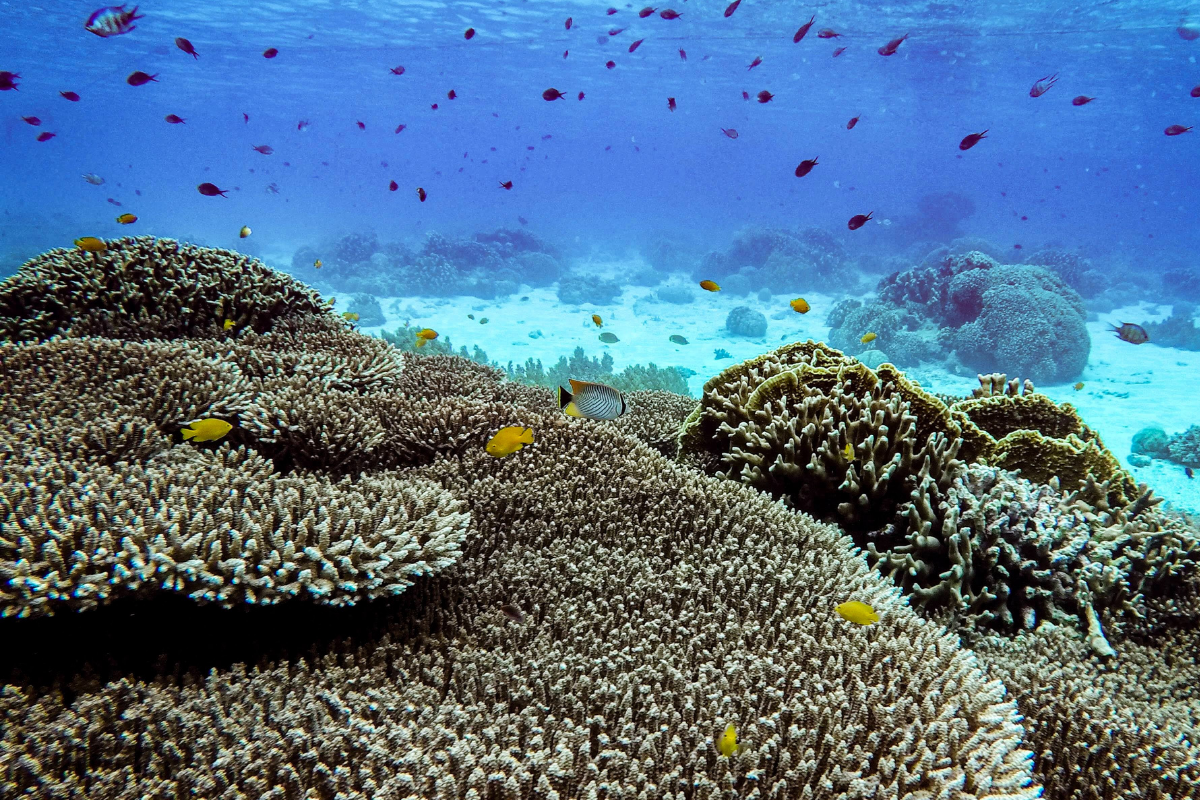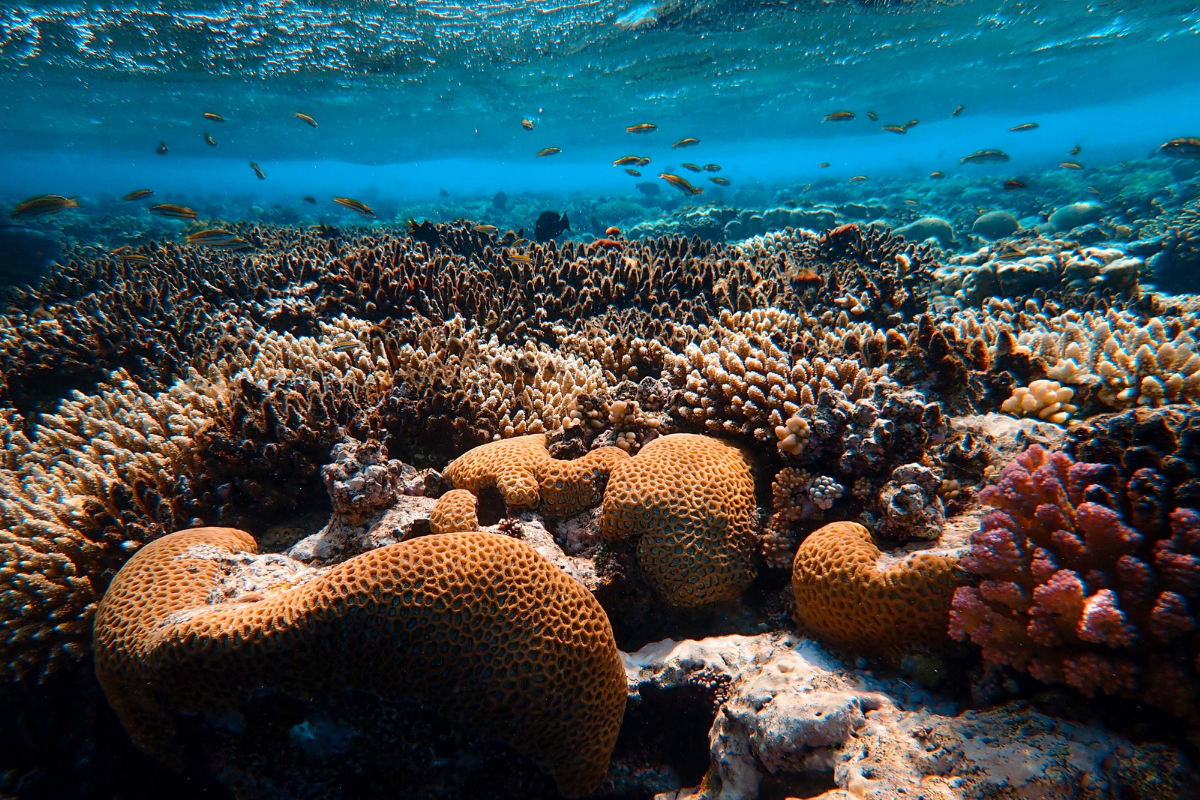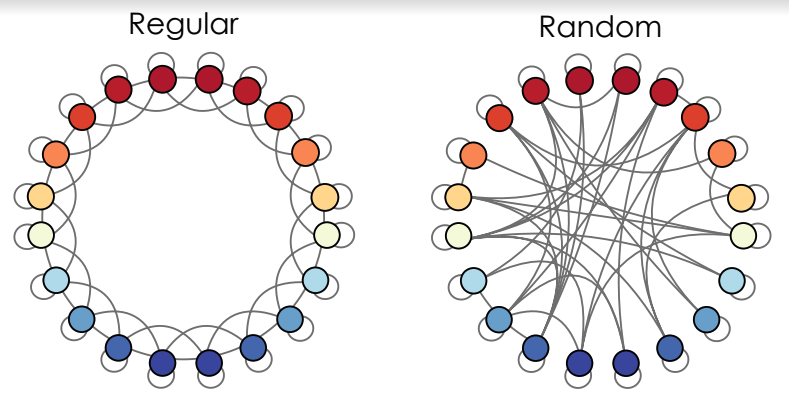In a lot of ways, corals are like trees—they stay rooted in one spot their whole lives, and they disperse their young into the environment. With many trees, their young typically fall to the ground and stay relatively close. But with corals, their young are moved by ocean currents that can carry them thousands of miles away. No squirrel can carry an acorn that far!
Understanding how coral reefs are connected to each other through the movement of coral larvae (baby corals) is vital to our work saving coral reefs.

Research shows that corals are adapting to the effects of climate change, like warming ocean temperatures. And when a coral adapts to become more heat tolerant, it can spread those heat tolerant traits by sending its coral babies to other reefs. We can encourage that evolutionary process by keeping coral reefs healthy.
But how do we prioritize one location over another? How do we know where to focus our efforts, and where to keep coral reefs healthy? We start by looking at population connectivity—or in this case, the way coral reefs are connected to each other by ocean currents.
Basic ecological theory tells us that in sessile species (species that don’t move, like corals), a population will be better off if it has random connections to other populations. For example, coral reefs that can send and receive coral larvae from a random mix of other coral reefs—near or far, in hot or cold water—will have more abundant populations of corals.

The theory makes sense: having networks that are more random likely leads to more diversity, which lowers the chance of something like a disease wiping out a population.
But new research by our partner, Dr. Lisa McManus of the Hawai’i Institute of Marine Biology, says that’s not necessarily true when you add evolution and climate change into the mix.
McManus and team created two mathematical models to simulate two different ways populations could be connected to each other. The first was one with random connections—this was called the random network model. The second, called the regular network model, represented a network where populations were only connected to other populations that had similar temperatures and environments.

“This study was not about any particular organism,” says McManus. “But we can translate these results to corals by thinking of populations as reefs that are experiencing relatively hot or cold temperatures within a reef network.”
When they first ran the models without evolution, basic ecological theory was correct: the random network did lead to a larger average population over time.
But then they allowed populations to evolve in the model and got very different results. When natural selection was thrown into the mix, the regular networks performed better. McManus says that’s because the types of connections influenced whether evolution helped or hindered adaptation.
“The random networks didn’t perform as well,” says McManus. “As temperatures increased, the reefs in cooler waters did well because they were receiving already-adapted heat-tolerant corals from the reefs in hotter waters. But you also had the coldest individuals arriving in the warmest sites, and they didn’t do so well. Overall, the populations ended up declining.”
She refers to the influx of corals from cold locations arriving in warm locations as gene swamping, where poorly adapted individuals spread genes that don’t help a population thrive.
In contrast, in the regular networks, the warmer reefs were more isolated from cold sites and so were able to adapt without an influx of cold-water corals, leading to higher population abundance overall.
“The warmer patches of reefs weren’t reliant on this immigration of pre-adapted individuals,” says McManus. “They were already in warmer water, so there were no other individuals that could save them. The only way they could survive is if they evolved on their own. In the regular networks, the warmer patches were able to adapt because they were relatively isolated from the colder patches.”
McManus recognizes that this research is based on a very simplistic view of coral reef connectivity, but that doesn’t take away from its importance.
“Real reef systems are probably a combination of these two types of networks,” she says. “In our models, you have one extreme where coral reefs are only connected to reefs that are similar to them, and you have another extreme where coral reefs are only connected to reefs that are really different. In the real world, coral reefs are probably connected to both.”

For McManus, the biggest takeaway from this project is that it highlights the importance of considering evolution when building a conservation strategy.
“This study points to the importance of evolutionary capacity,” says McManus. “There’s an interaction between evolution, connectivity, and environmental heterogeneity—those three components all intersect. This allows us to understand that relationship better and move forward with more realistic and more complex applications of this model that better represent real life.”
That next level, applying these models to more complex and realistic scenarios in specific coral reef regions around the world, is work that McManus has also completed and has just been accepted for publication at Global Change Biology. That study focuses on reefs in the Caribbean, the Indo-Pacific, and the Southwest Pacific to better understand the regional coral reef characteristics that lead to a population’s persistence or decline.
The results will help us, and coral scientists and conservationists around the world, determine the most effective ways to protect coral reefs in those three geographic regions and create the conditions that will allow them to adapt to climate change.
For Dr. Madhavi Colton, our Executive Director and one of the founding members of this research group that is exploring how corals adapt to climate change, this new study helps prove something we’ve suspected all along.
“If you take a view of the world in which these systems are not actively evolving, then the conclusions you draw about the future and the conservation actions that are needed are likely to be wrong,” says Colton. “These systems are actively evolving, and once you start thinking about evolution, it changes everything.”
